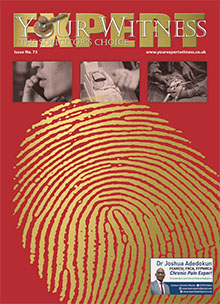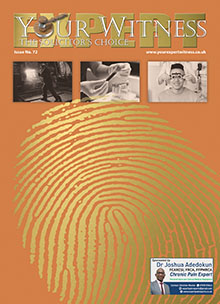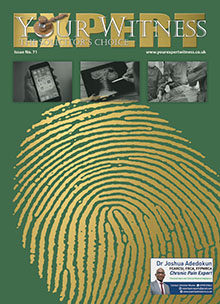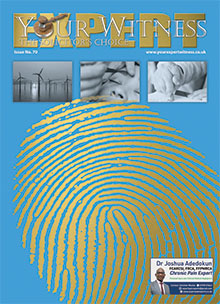ASBESTOS FALLS into two distinct categories of legal work: the personal claims of those exposed in the past and the cases involving recent occurrences that result in civil or criminal proceedings.
The personal claims area is fairly straightforward for the expert, particularly as they are usually dealt with by specialist legal teams backed up by medical experts. The matter for the asbestos expert is quantification of exposure of the plaintiff in the work situations described and, though not an exact science, presents not too many difficulties.
The main problem, in my experience, is the disappointed reaction from the legal professional when a tradesman has identified a particular employer or contract where he used asbestos. Once one points out the universal application of asbestos products from the 1950s to the 1980s and beyond, and the relative scale of the expected exposure in a working life, one is sometimes seen as less of an asset than was hoped for. The scale of the problem is vividly demonstrated in HSE’s 2008 asbestos campaign with a leaflet advising that 20 tradesmen will die this week from asbestosrelated disease.
Asbestos can be a difficult area to deal with in both civil and criminal proceedings relating to recent events. The primary difficulty is the steep learning curve that is required of the legal professionals involved, because cases involving asbestos are relatively rare. While a construction law background is a helpful trait in the legal professional one deals with, that is only the beginning and it is necessary to allocate sufficient time to talk with your expert to understand just what he is saying.
Experience dictates that the best way to proceed is with the same solicitor all the way through and with the introduction of counsel as early as possible. This may seem perfectly obvious, but it is not always the case. Asbestos is my business, not the law; but for the lawyer to make a proper judgement as to how to manage his case, he must understand exactly what the case is about.
What makes it difficult? It is too easy to use the emotive nature of asbestos to build up an image of disaster out of very little. Yes, there are regulations: plenty of them. But once a party starts to declare a building to be contaminated, recourse to common sense can be difficult. Asbestos remediation costs tend to defy the skills of the best quantity surveyors; on the other hand a loss adjuster, given good advice, can sometimes make a significant difference, especially if hired very early on.
Swift action is the best way to deal with potential asbestos claims but there are various ploys that are used to maximise compensation claims and also in ‘job creation’ for consultants and asbestos removal companies.
The usual scenario of a claim relates to inadequate survey, inadequate work by a licensed removal contractor or uncontrolled work by an unlicensed operator who should not have disturbed the asbestos in the first place. All too often, initial denial leads to waste of time and escalating problems.
The basic principle, that if a contractor’s work is inadequate he should have the opportunity to remedy it, is often swept aside. Another party is brought in to condemn the state of the building, paint the perpetrator as totally incompetent and close down the site as ‘grossly contaminated’. This is the point where open cheque books tend to appear in the presumption that the original contractor’s insurer will foot the bill.
At this point the Health and Safety Executive is usually contacted to add gravitas to the situation. HSE will make some minor investigation, so they have some evidence, but they will usually await the outcome of the civil claim. If a substantial award is made, then inevitably a criminal case will stand up. Viewed from HSE’s perspective nobody died, no limbs were lost and the demonstration of harm to persons can be difficult, especially if defended in court.
Some of the most satisfying work I have done has been of very short duration, where a potential claim has been recognised very early on, legal advice sought and the expert hired. If you can spell out to the plaintiff that you are going to want him to produce precise evidence of all the details to which he alludes, often he reconsiders his position. If you do not do that, several months on and several hundreds of thousands of pounds later, there is no evidence left other than the generalities of accusation.
A particularly unpleasant ploy of the plaintiff, given advice by some consultants, is to demand that the defendant does expensive investigation to prove the extent of the problem. This is to be resisted totally: turkeys do not vote for Christmas.
In asbestos, no doubt as in other fields of compensation claims, there are those who gain from encouraging their clients to make a claim and over-inflate the extent of contamination and consequential loss. Demonstrating the presence of asbestos fibres in a building where it has been installed is not hard. The fact that matters is the estimation of risk to health from that residual asbestos.
UK legislation requires that, after asbestos has been removed, the air in the room after appropriate disturbance contains less than 10,000 fibres per cubic metre of air. Using highly sensitive techniques, one can find some of those residual fibres. That is an example of the difficulties one comes up against: the plaintiff says there is asbestos in the room because their expert has demonstrated its presence.
One must then try to persuade the court that this presence does not mean that the work was not done properly, in accordance with the law, and consequently there is no increased risk to health. It is around this point that the legal professionals look uncomfortable and the insurer gets the cheque book out. Justice, however, has not been done.



 “Speculate before you accumulate. I am a long term regular writer and advertiser in 'Your Expert Witness - the Solicitor’s Choice'. This investment pays me substantive dividends; I get more Expert Witness work with every issue. Not only solicitors and barristers but also judges seem to read it. It is a win-win situation. Success breeds success; I must continue to write and advertise.”
“Speculate before you accumulate. I am a long term regular writer and advertiser in 'Your Expert Witness - the Solicitor’s Choice'. This investment pays me substantive dividends; I get more Expert Witness work with every issue. Not only solicitors and barristers but also judges seem to read it. It is a win-win situation. Success breeds success; I must continue to write and advertise.”
























































































































